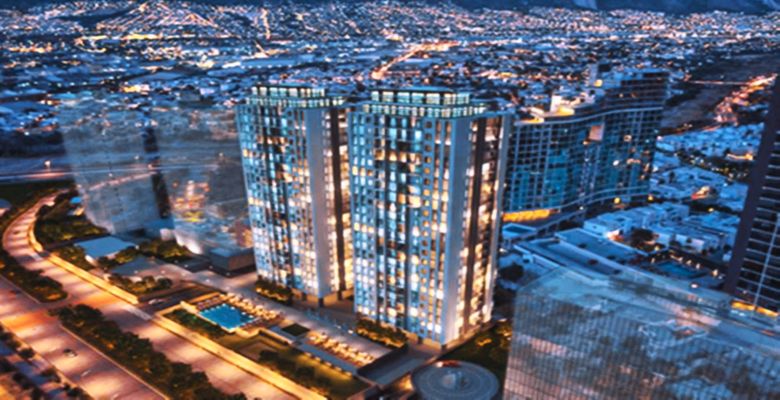
Discover the New Housing Development in the Central Zone of CDMX
MEXICO CITY DOWNTON CONSOLIDATES AS THE AREA FOR NEW HOUSING DEVELOPMENT IN THE CAPITAL.
One of the most attractive areas in Mexico City (CDMX by its initials in Spanish) in its Downtown because it concentrates numerous spaces for commercial and services use: from private and government offices to diverse recreational areas and entertainment centers. This great offer has positioned CDMX Downtown as one of the favorite places to live of both locals and foreigners that have arrived at the metropolis as tourists, students, or workers.
Looking to reactivate the economic activity and re-densify some neighborhoods in Mexico City Downtown due to its solid infrastructure, urban equipment, accessibility and public transportation, the real estate industry has been developing new residential, commercial and office projects there in the last few years.
Starting in the most attractive zones with the highest value, the Downtown reactivation of the country capital has been expanded to those zones that were considered as lacking potential for real estate investing. By doing this, the offer for different market niches has been increased, particularly of new housing for families with different economic possibilities that work in the surrounding neighborhoods: Doctores, Buenavista, Santa María la Ribera, Guerrero, Centro, Roma Norte, Juárez, San Rafael, Algarín, Obrera, Peralvillo, Asturias, Aternor Salas, Atlampa y Maza.
To better understand this phenomenon in the area, we’ll discuss and analyze the market tendencies in CDMX downtown by sampling the current offer in neighborhoods with similar characteristics such as distances to activity centers, access to main roads, and socioeconomical environment.
Overview of the current new housing market in Downtown CDMX.
In the last three years, the housing offer in Mexico City Downton increased 75% in number of units to sell. However, the volume of monthly sales decreased 3%. The inventory volume also grew 2.4 times, even if the average absorption per project shrunk to just unit per month.
While evaluating the total monthly sales per segment, the Medium segment oscillated between 28 and 52 properties in the period between the third quarter of 2017 and the second quarter of 2020. The variations with low tendencies were observed in the end of the analyzed period.
The Residential segment has shown more dynamism in monthly sales in the same period. Even if it registered only 41 units sold in the third quarter of 2017, it managed to maintain an average of 49 sales during the second quarter of 2020. Its record of sales was achieved in the second semester of 2018, reporting 82 units sold monthly.
Finally, the Residential Plus sector is the most static out of the three by recording the littlest number of sales in the same period. In the second quarter of 2020, it reached a total of 14 sales, up from its all time low of 6 units sold in the first quarter of 2019 and far from the biggest number of sales achieved in the last quarter of 2017 (31 units sold monthly).
Changes in the number of projects for sale in Mexico City Downtown.
Changing the perspective to the number of projects for sale in the zone, the developments for the Residential and Residential Plus are increasing. This is a notable contrast with the Medium segment that has reported less new projects since the third quarter of 2017.
In the third quarter of 2017, the Residential sector had a total of 22 current projects. By the second quarter of 2020, the offer had increased to 56. On the other hand, the Residential Plus started the period with a single project in 2017 and closed with seven projects in development.
Nevertheless, it is important to consider the monthly sales achieved per project. The Residential segment allocates 0.8 units monthly whereas the Residential Plus displaces an average of 1.8 units in the same amount of time. To talk about the success of a project is important to take into accounts its size and success during its commercialization stage. In average, the inventory allocation time is of 45 months (3.8 years) with selling prices ranging from 800,000 to 2 million pesos in the Medium segment, from 2 to 4.4 million pesos for Residential and up to 4.5 million in the Residential Plus.
Mexico City Downtown market is one of the most competitive in town due to its notorious difference in offer between the segments. It also has a variety of options for the Medium and Residential sectors, especially for those looking for a house in the price range of 1.2 to 4.4 million pesos, a selling price hard to find in other areas with higher surplus in the metropolis.
To develop a new project in the area is important to rely on trustful information – both market and segment – to identify opportunities in those neighborhoods with the highest ROI potential. Also, it’s important to define the characteristics of the project in the product-price relationship, living space, finishes, amenities and parking space so it can be distinguishable in a zone with a high possibility of estate recycling.
As the country capital, Mexico City has a high connectivity to other important cities for the economic progress of the country such as Toluca, Querétaro, Puebla, Guanajuato, Guadalajara, Zapopan, Zacatecas, Durango, Gómez Palacio, Torreón, Saltillo, Monterrey, Chihuahua, Tampico, Tijuana, Mexicali, Hermosillo, Obregón, Los Mochis, Culiacán, Mazatlán and Tepic.
Keywords: CDMX, Mexico City, CDMX Downtown, CDMX medium segment, CDMX residential segment, CDMX residential plus segment, CDMX downtown reactivation, CDMX housing development, real estate investments, CDMX housing offer.